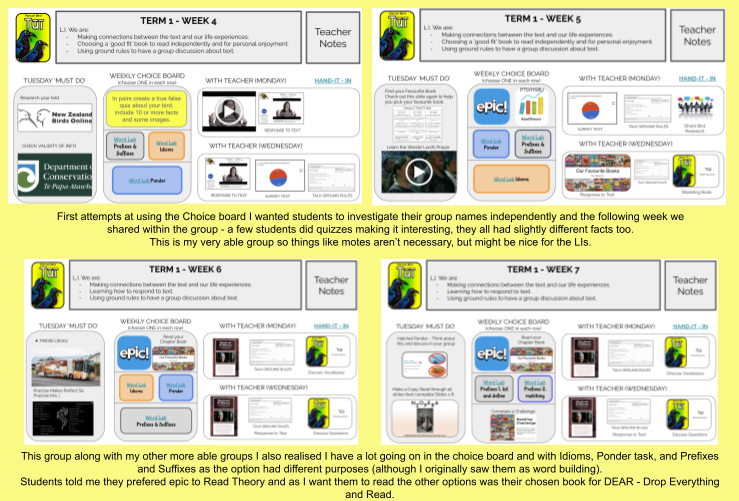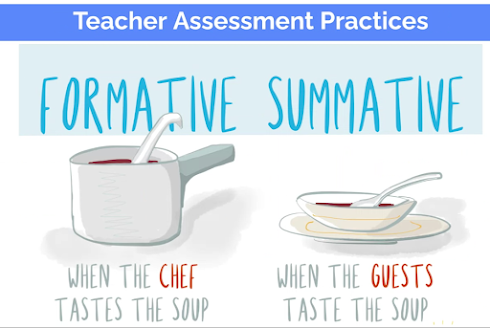Kia Ora,
I started my class later than most, so I decided to dive right in with the task boards after week 1. Also, the first one (shown to us) had a lot of relevant tasks revolving around the discussion rules and the survey data I knew it was a great way to start.

The Yellow set of taskboards is for my more able group, they could handle the variety of options.
However, after RPI session 2, I did notice that I had the choice of task and learning. Students could do Word Lab Idioms or Ponder, which was rotated with Prefixes and Suffixes. Making it difficult to work out who had learnt what. I
If you look at Week 7 you can see I have modified it so everyone is doing prefixes it is the task that varies (as it should be). In Week 8 we will look at Idioms and then return to Prefixes in Week 9. The Ponder I wanted everyone to do so that became part of the 'Must-Dos' each week, as it relates to the Read to Class, book we are looking at this term.
Initially, I wasn't using the Reading Challenge as a follow-up to independent reading as the links weren't working on our school network. When I mentioned this to the class one of the students found an alternative in minutes.
The text the group is reading may be worked on over 1 to 2 weeks, depending on the size and understanding of the students.
oOo
The Lbue set of task boards is for my lower group. You can see, I have used motes to reiterate the main instructions and Learning Intentions. I will extend this to the instructions for the 'Must-Do' tasks.
I have simplified the Choice section to ensure choice in reading for milage and will teach prefixes and other vocabulary features as needed.
This group I also see 3x a week and altered the board to show this. From my experience as a facilitator, My modelling book has the questions we will discuss for the text too.
Next, I would like to discuss with students how they will know they are achieving (success criteria) This will probably end up in the Modelling book for each level.
oOo
As I mentioned, I was starting out with organising my class I also created a modified Maths task board with workshop students opt into. They have to attend 2 each week. I also checked what others were doing. As I have Year 7 and 8 I like the detail and option in my task boards. It will be interesting to see how these develop through out the year.














































